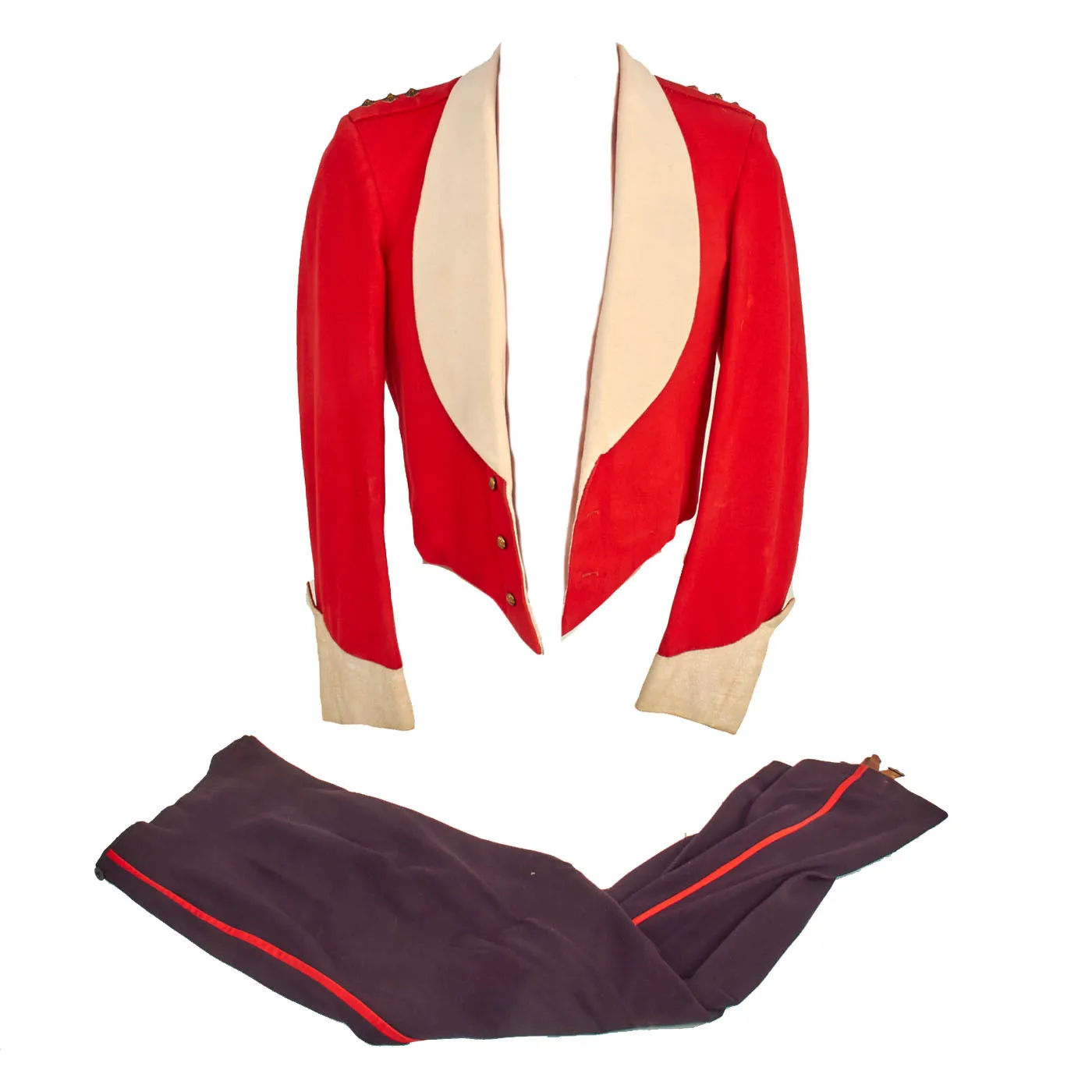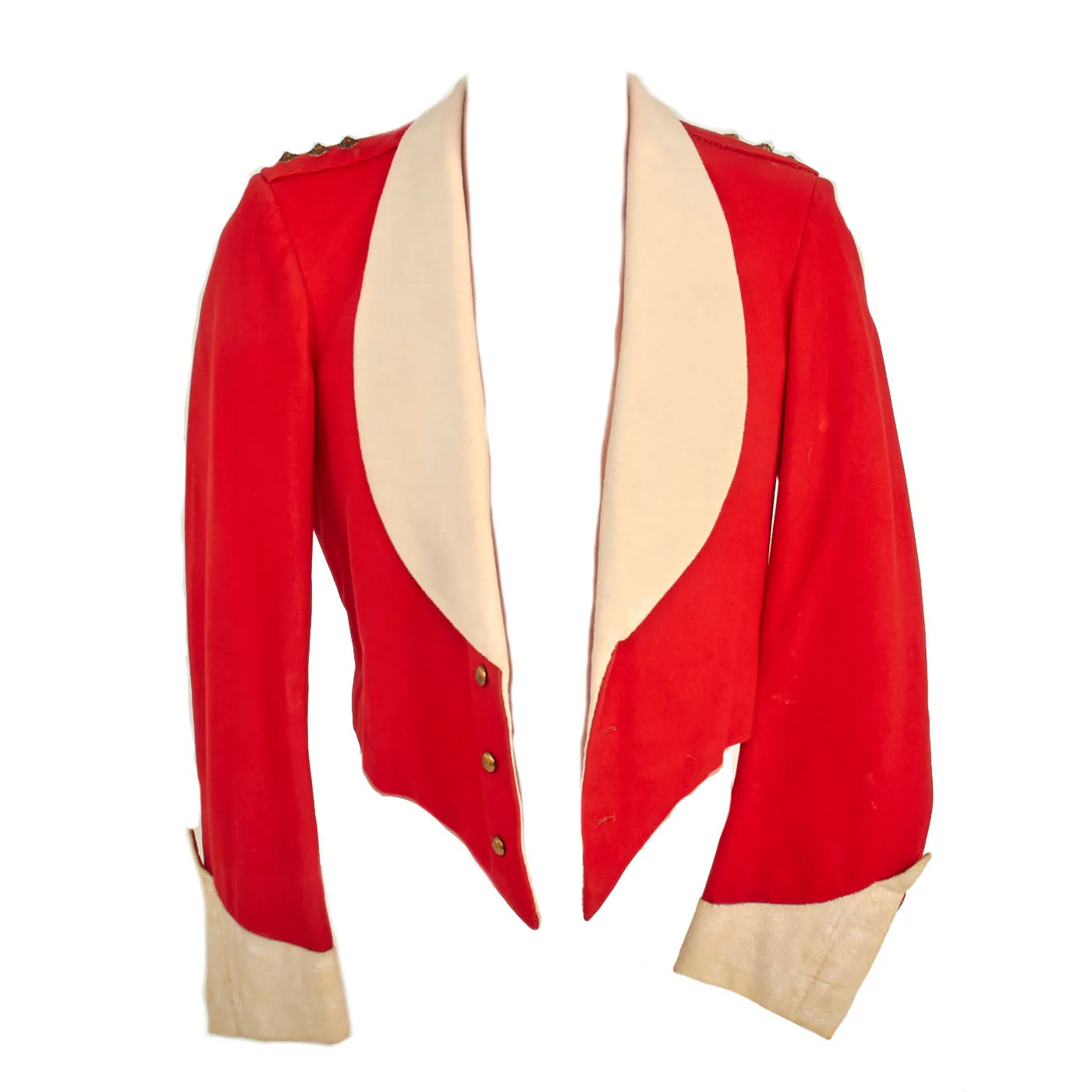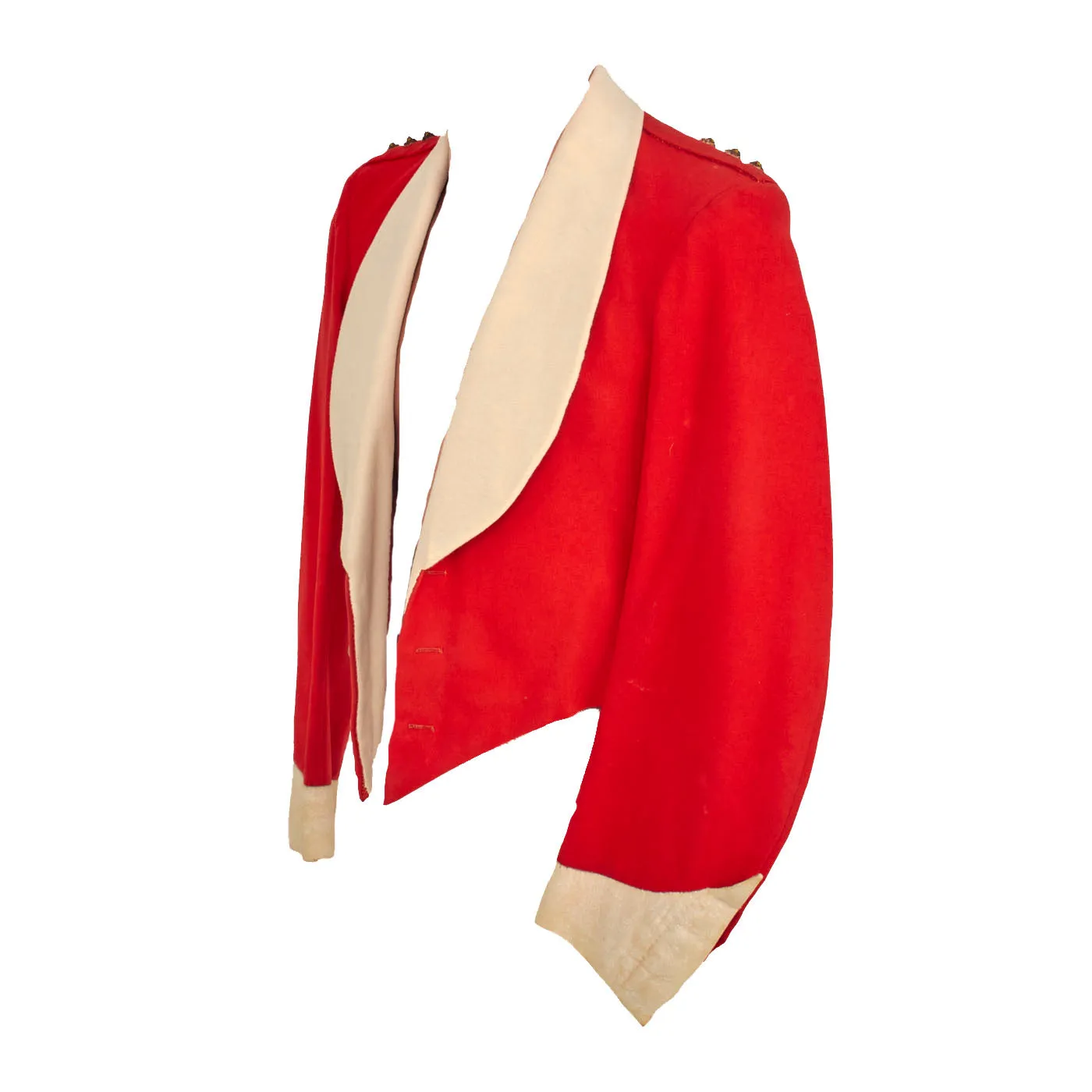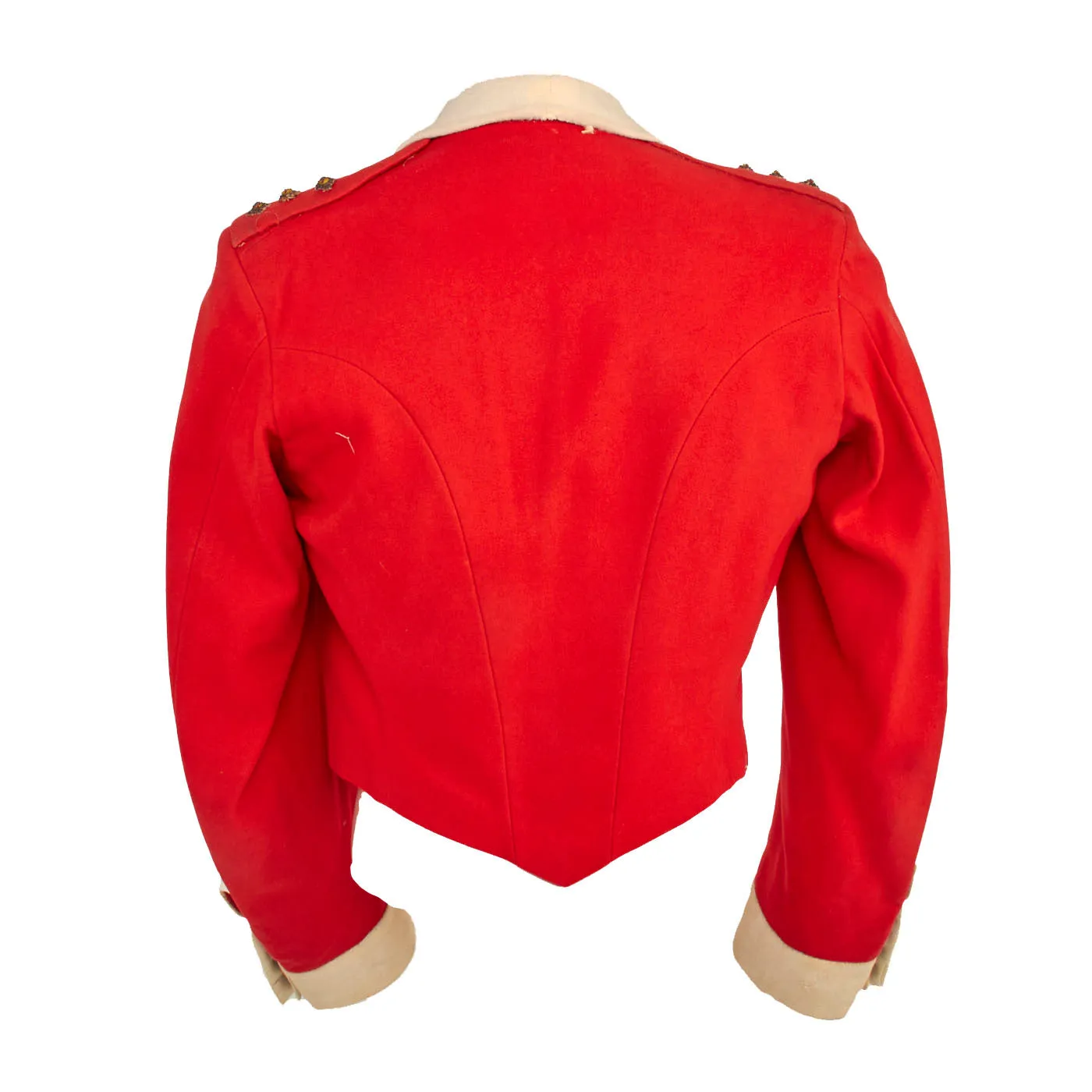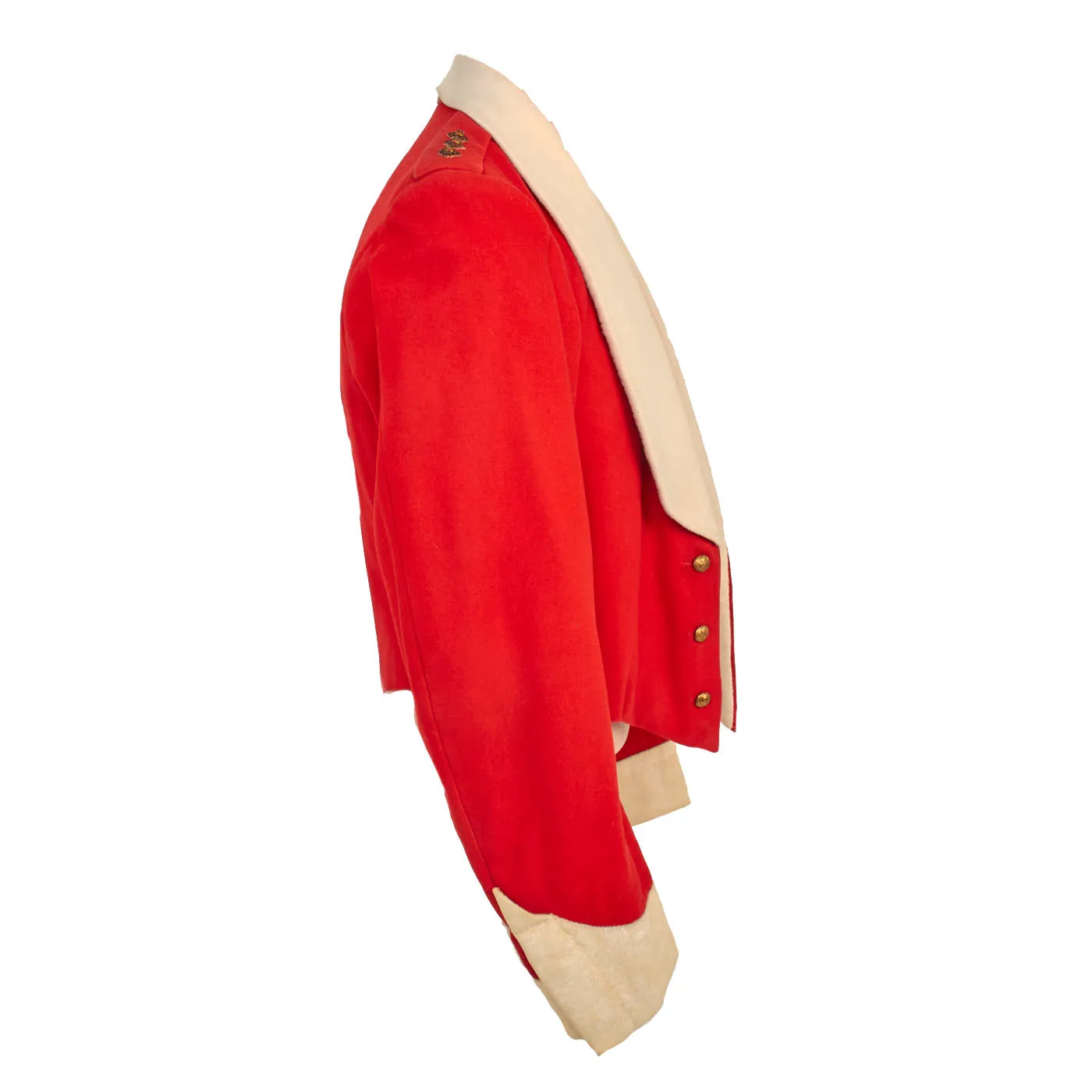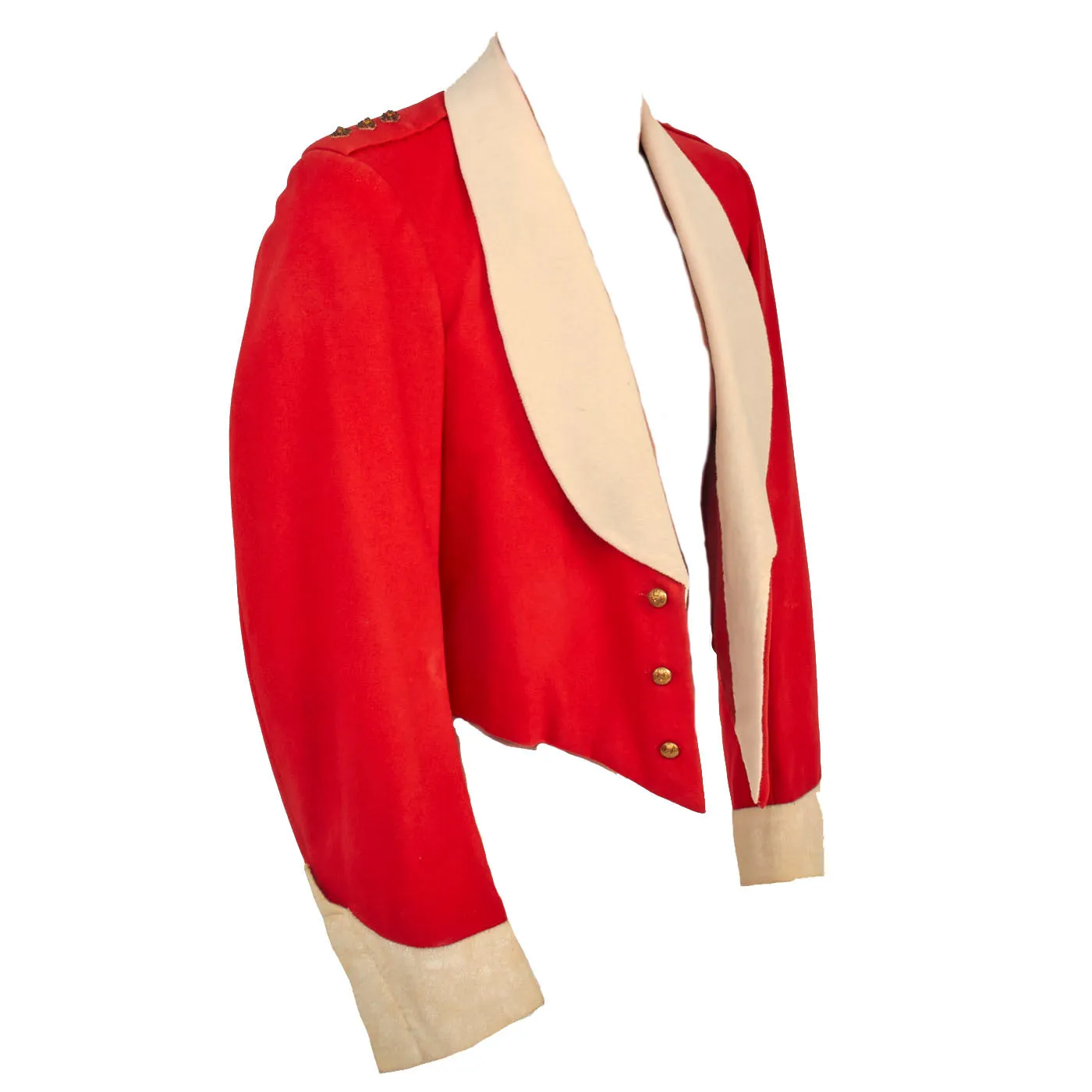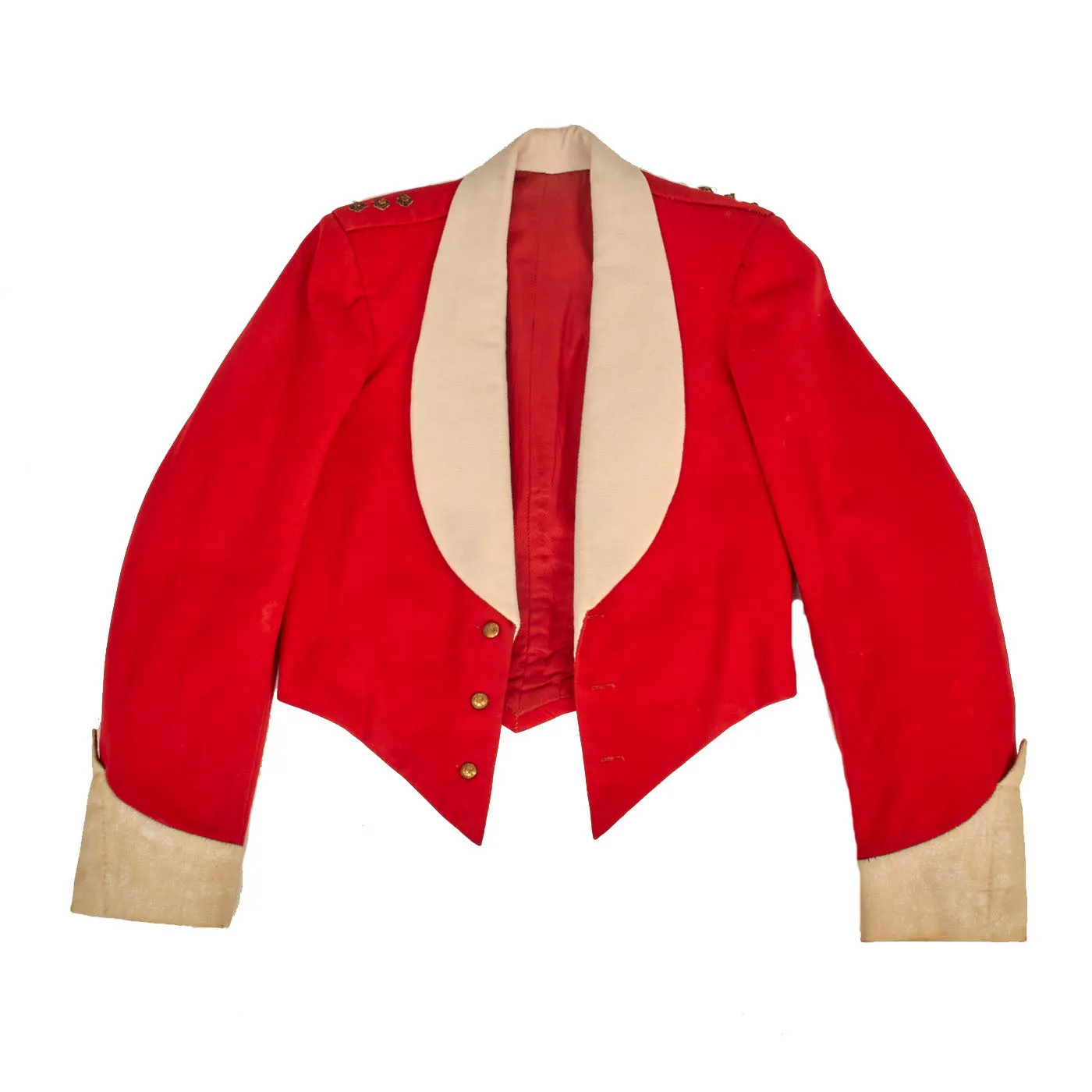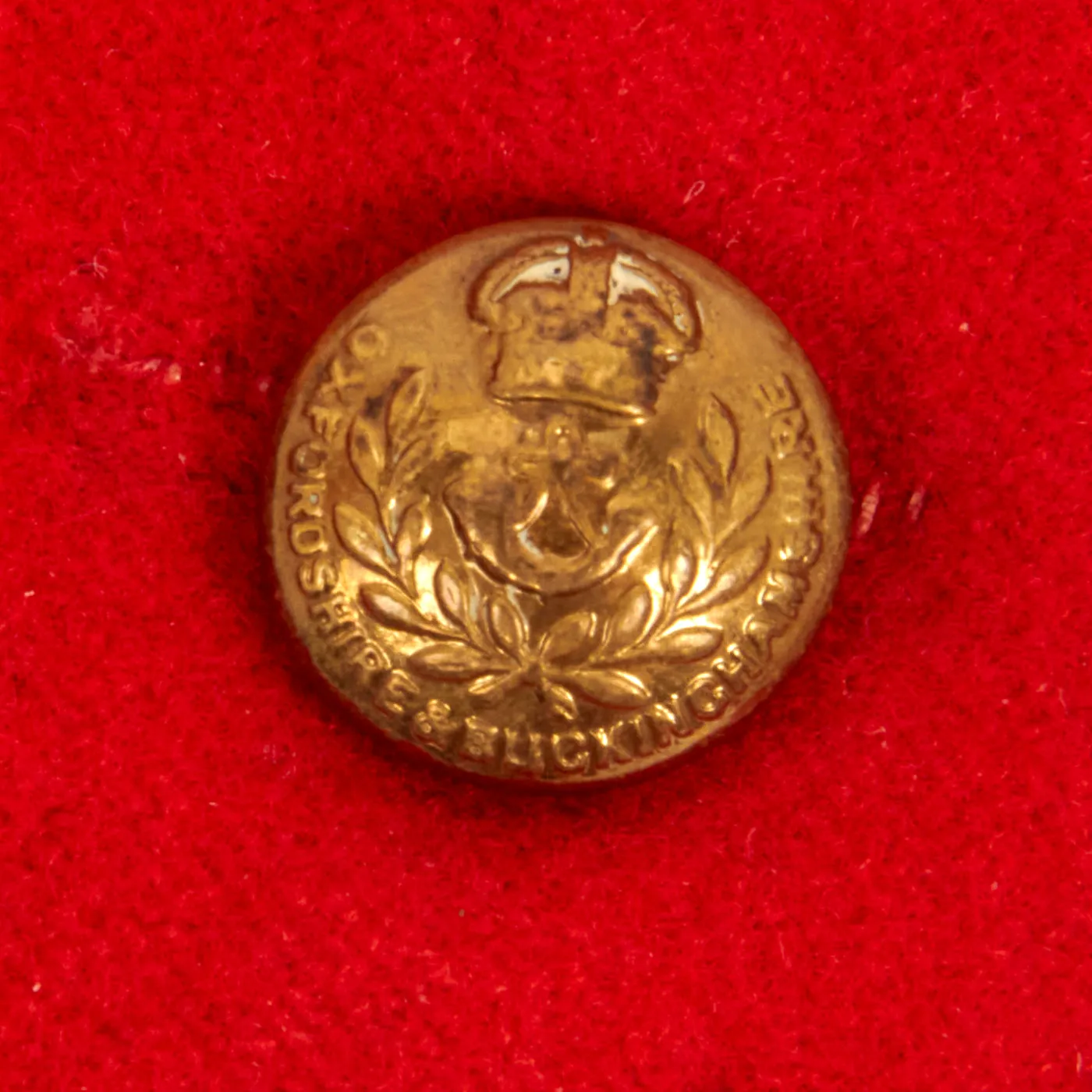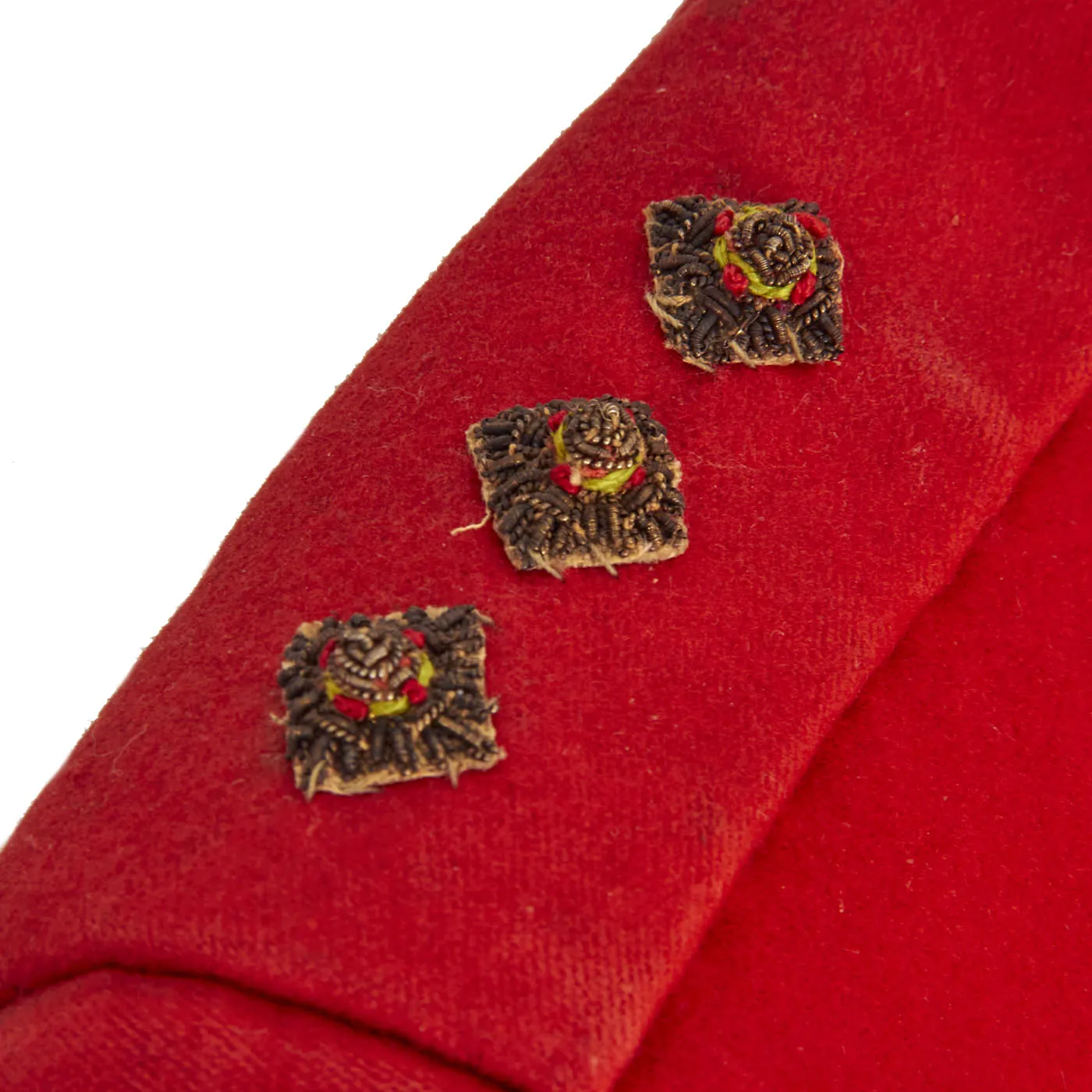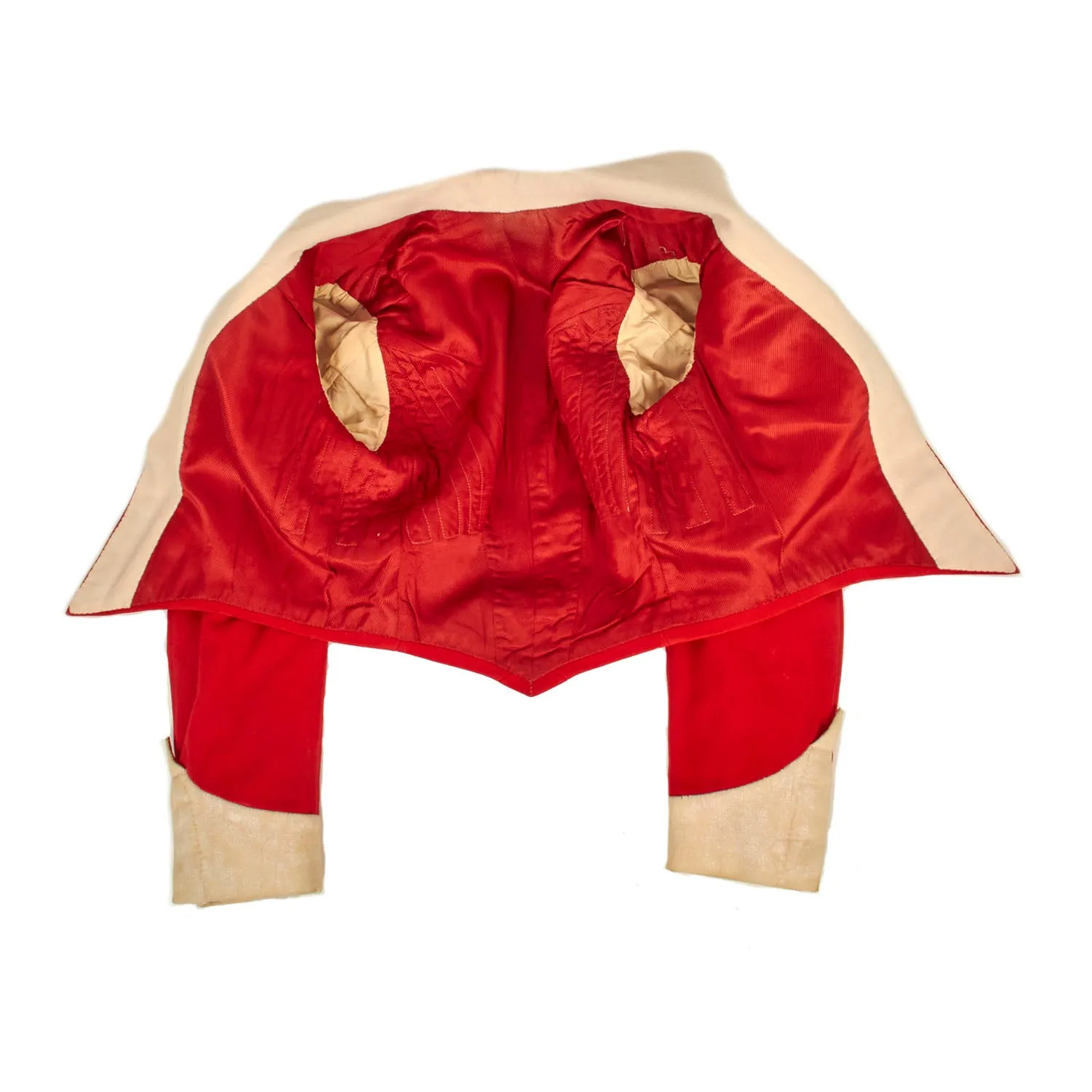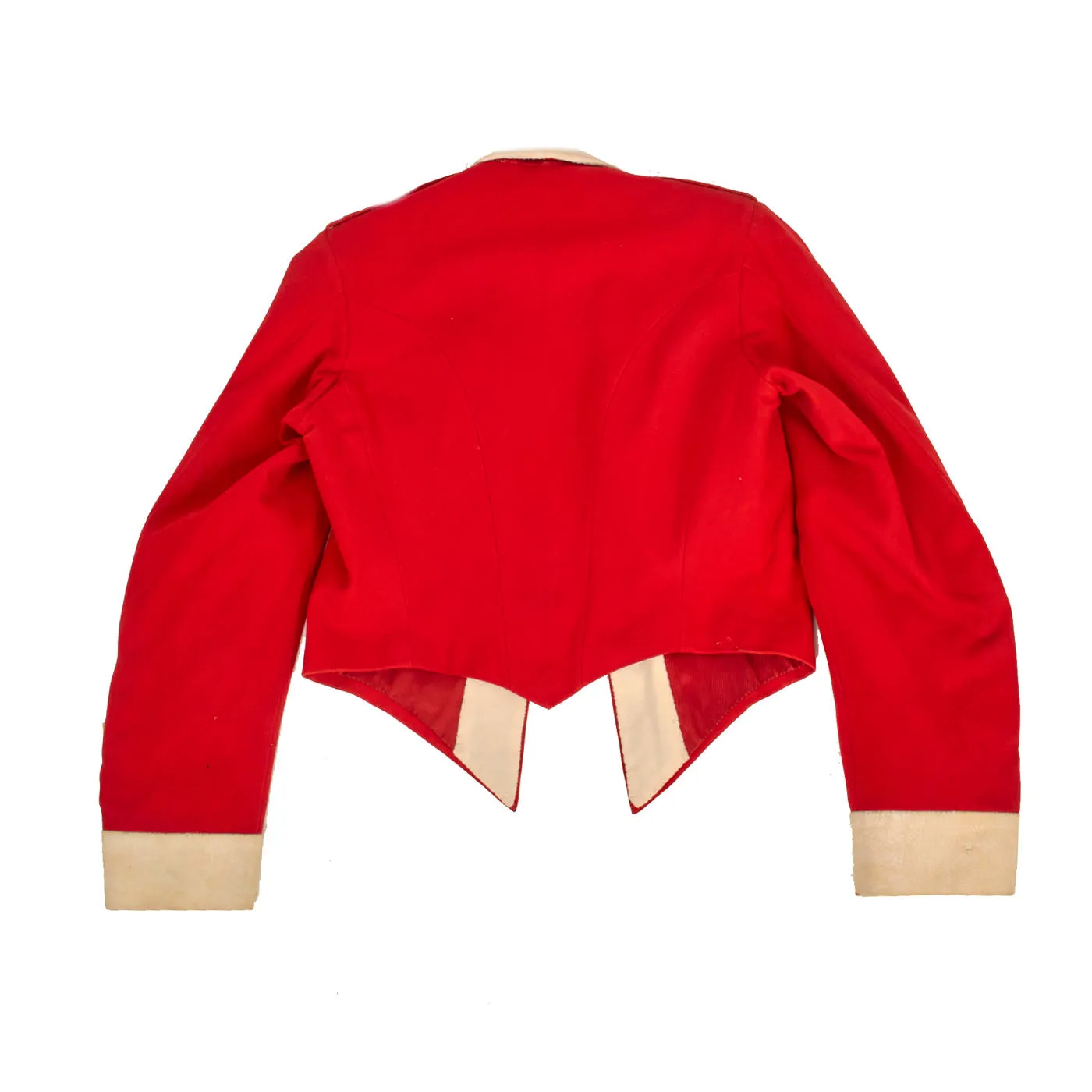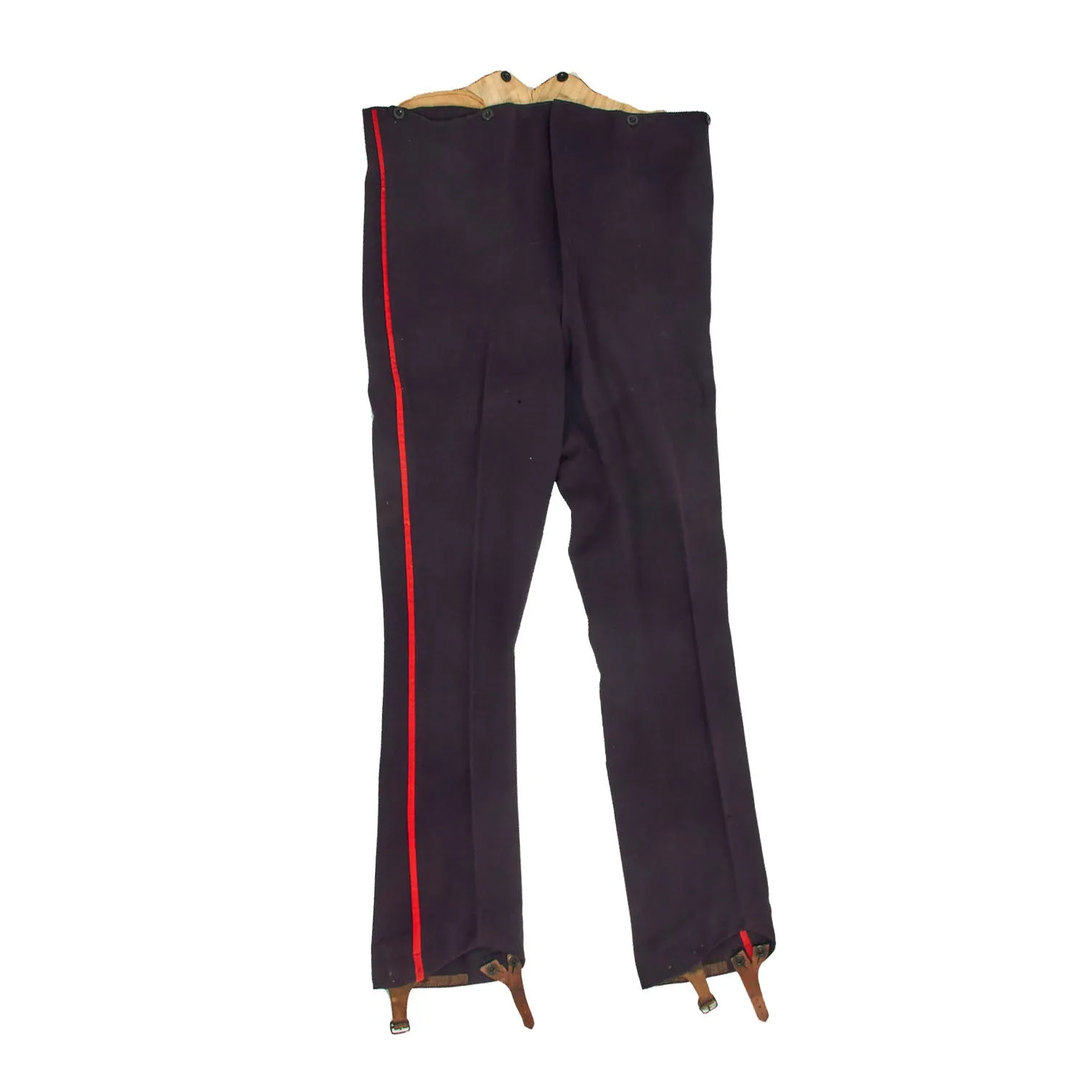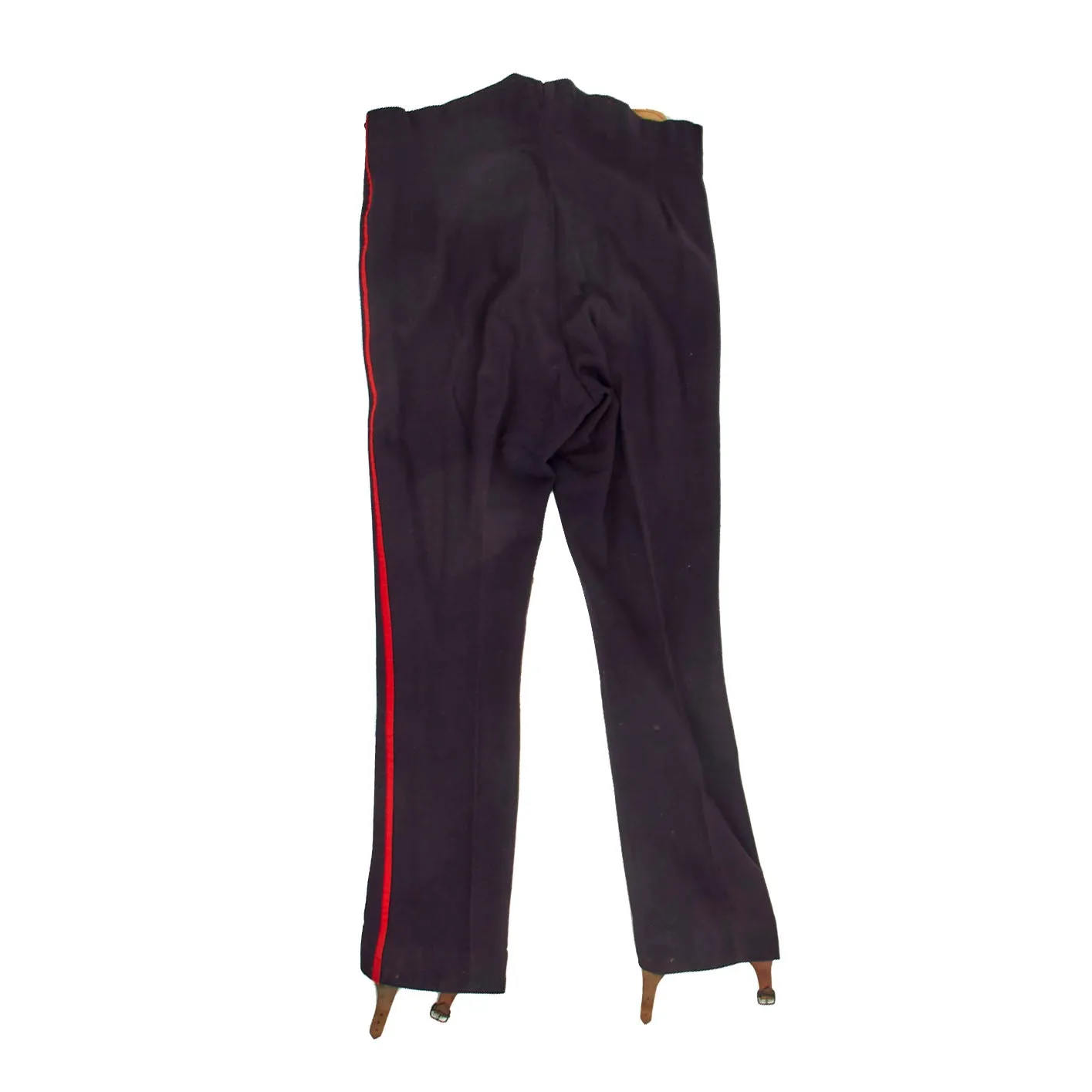Original Item: Only One Set Available. British Army mess dress is the formal military evening dress worn by British Army officers and senior non-commissioned officers in their respective messes or at other formal occasions.
Mess uniforms first appeared in the British Army in about 1845, initially utilizing the short shell jacket worn since 1831. This working jacket was worn open over a regimental waistcoat for evening dress. The original purpose was to provide a relatively comfortable and inexpensive alternative to the stiff and elaborate full-dress uniforms then worn by officers for evening social functions such as regimental dinners or balls. With the general disappearance of full dress uniforms after World War I, mess dress became the most colorful and traditional uniform to be retained by most officers in British and Commonwealth armies. Immediately after World War II the cheaper "blue patrols" were worn for several years as mess dress, but by 1956 the traditional uniforms had been re-adopted.
This example is a “No. 10” temperate mess dress uniform set belonging to a Captain in the “Oxfordshire & Buckinghamshire” Light Infantry during WWII. The British Army's temperate mess dress includes a waist-length short jacket, with which men wear trousers, overalls or a kilt; and for women a long skirt. No. 10 dress is normally worn by sergeants and above for formal evening functions. Colors vary greatly from unit to unit but generally match those of the traditional full dress of the regiment or corps. Thus mess jackets can be scarlet, dark blue or green with facings and waistcoats in regimental colors, which in this example is white. Two basic patterns of jacket are worn: the high collared "cavalry" style and the open-fronted one with lapels formerly worn by officers of infantry regiments. The version of No. 10 dress worn by officers frequently includes elaborate braiding on the waistcoats.
The buttons and buttonholes on this example are purely ornamental and do not function as a regular button. Both the front buttons and cuff buttons bear the crest for the Oxfordshire and Buckinghamshire Light Infantry, a light infantry regiment of the British Army that existed from 1881 until 1958, serving in the Second Boer War, World War I and World War II.
The tunic is in excellent condition with signs of little wear and use. The white facings do have minor age toning present, but the white colors are still bright. The 3 bullion rank pips on the shoulders are in good condition but a few have started to come undone, but nothing too serious.
Most British Army regiments' mess dress incorporates high-waisted, very tight trousers known as overalls, the bottoms of which buckle under leather Wellington or George boots. These overalls are in similar condition as the tunic and show very little signs of wear. The leather straps and buckles at the bottoms are all in solid condition and completely functional without any damage.
This is a lovely uniform set in very good condition. Comes more than ready for further research and display!
Approx. Measurements:
Collar to shoulder: 9”
Shoulder to sleeve: 26”
Shoulder to shoulder: 16”
Chest width: 17”
Waist width: 14”
Hip width: N/A”
Front length: 24"
PANTS waist: 42"
PANTS inseam: 31"
Oxfordshire and Buckinghamshire Light Infantry
The regiment was formed as a consequence of the 1881 Childers Reforms, a continuation of the Cardwell Reforms, by the amalgamation of the 43rd (Monmouthshire) Regiment of Foot (Light Infantry) and the 52nd (Oxfordshire) Regiment of Foot (Light Infantry), forming the 1st and 2nd Battalions of the Oxfordshire Light Infantry on 1 July 1881. In 1908, as part of the Haldane Reforms, the regiment's title was altered to become the Oxfordshire and Buckinghamshire Light Infantry, commonly shortened to the Ox and Bucks.
On 3 September 1939 – two days after Germany had invaded Poland—the British Empire, France and their Allies declared war on Germany, beginning the Second World War. During that conflict the regiment raised nine battalions and the 3rd (Special Reserve) Training Battalion. The regiment saw service in France, North Africa, Burma, Italy, Belgium, the Netherlands and Germany. Approximately 1,408 officers and other ranks of the Oxfordshire and Buckinghamshire Light Infantry lost their lives during the Second World War.
The British rapidly sent the British Expeditionary Force (BEF) to France in September 1939 which included the Regular Army 1st Battalion, Oxford and Bucks as part of 11th Infantry Brigade, 4th Infantry Division. They were joined in January 1940 by the 1st Buckinghamshire Battalion and the 4th Ox and Bucks, both of which were Territorial units serving alongside the 4th Battalion, Royal Berkshire Regiment, as part of the 145th Infantry Brigade, part of 48th (South Midland) Infantry Division. In late January, due to a new policy within the BEF of integrating the Regular and Territorials, the 1st Ox and Bucks was exchanged in 11th Brigade for the 5th (Huntingdonshire) Battalion, Northamptonshire Regiment and transferred to the 143rd Infantry Brigade, of the 48th Division.
The Wehrmacht launched its invasion of the Low Countries on 10 May 1940, shattering a period of the conflict that was known as the Phoney War. The German invasion of northern Belgium—where the BEF was located—was a diversion with the main attack being through the poorly-defended Ardennes forest. The BEF withdrew west towards the Dendre river after the Dutch Army had surrendered during the Battle of the Netherlands, and then withdrew further towards the Scheldt river by 19 May. The 1st Ox and Bucks (43rd), 4th Ox and Bucks (TA) and 1st Bucks (TA) were involved in action along the line of the River Scheldt (Escaut), south of Tournai. The British force, having given a good account of themselves in the defense of the Scheldt, eventually withdrew into France, moving towards the area around Dunkirk. The evacuation of British forces back to Britain began on 26 May, known as Operation Dynamo (26 May–3 June). The 1st Ox and Bucks took part in the Battle of the Ypres-Comines Canal (26–28 May) and were eventually evacuated from Dunkirk, having suffered more than 300 casualties. The 4th Ox and Bucks (TA) took part in the defense of Cassel, Nord until 29 May. 4th Ox and Bucks were eventually encircled by German forces near Watou and forced to surrender. The battalion had split into two groups with the aim of reaching Dunkirk by going through the surrounding enemy forces. The battalion sustained many casualties and had to surrender; becoming prisoners of war for the next five years. Only four soldiers from the two groups of 4th Oxfordshire and Buckinghamshire Light Infantry that had left Cassel returned to the UK. The 1st Buckinghamshire Battalion took part in the battle for Hazebrouck which commenced on 27 May where they came under heavy attack from all directions by the German 8th Panzer Division and for a week managed to delay the German advance. The 1st Bucks were eventually ordered to fight their way back to Dunkirk; only 10 officers and approximately 200 men of the battalion reached the United Kingdom. However, more than 338,000 British, French and Belgian troops were evacuated during the Dunkirk evacuation.




